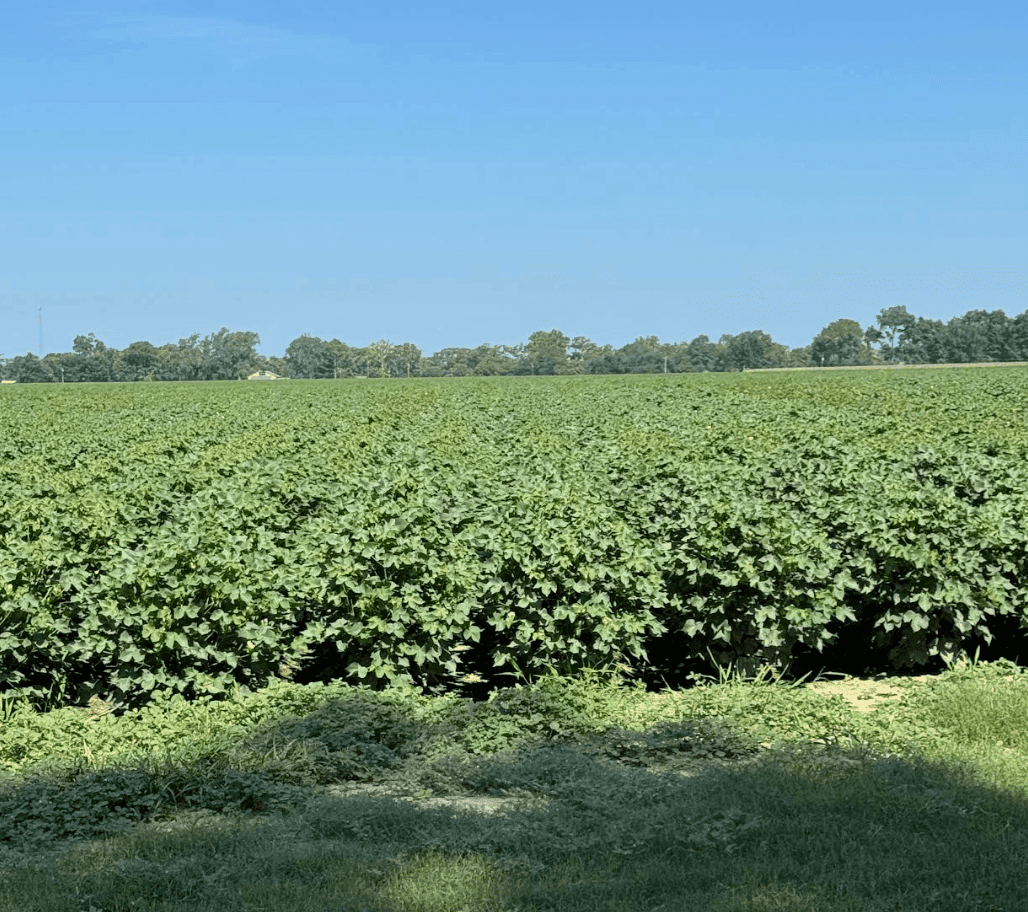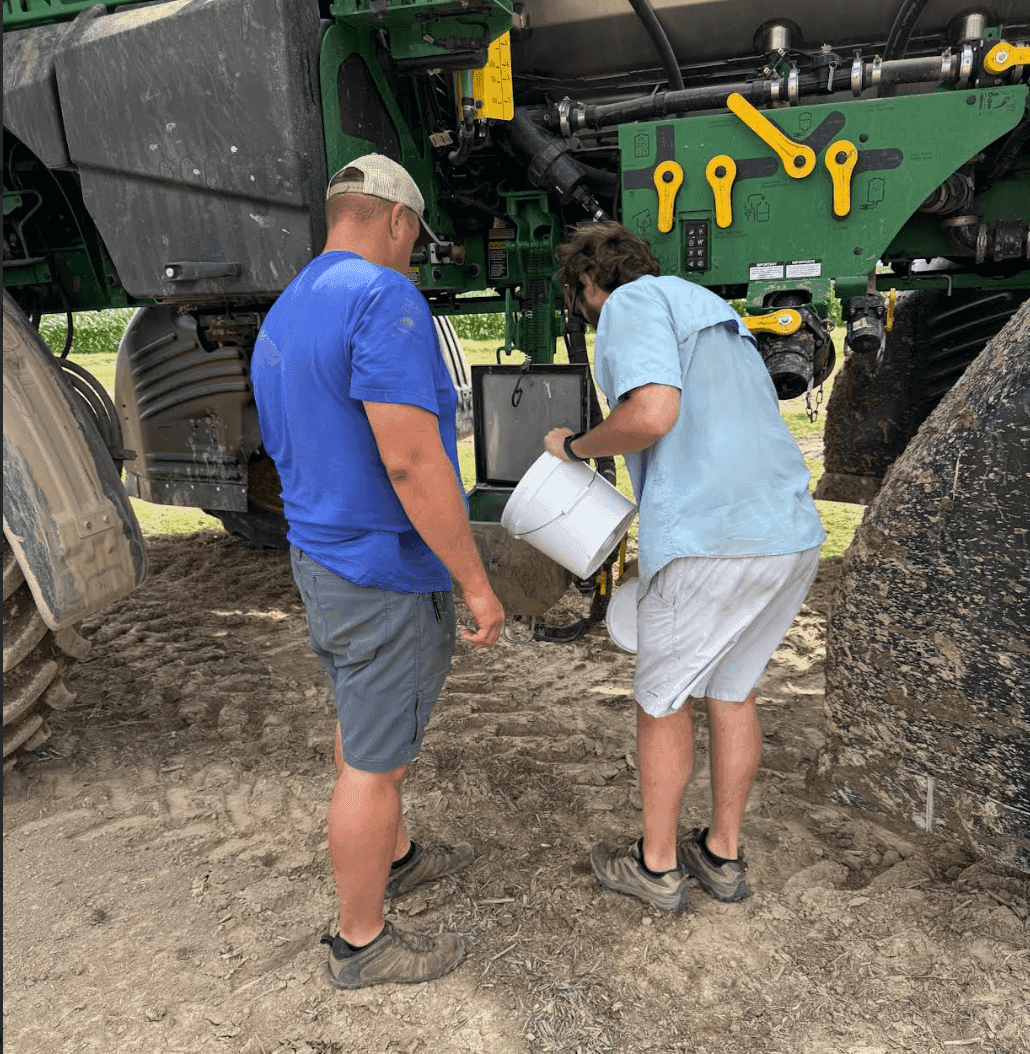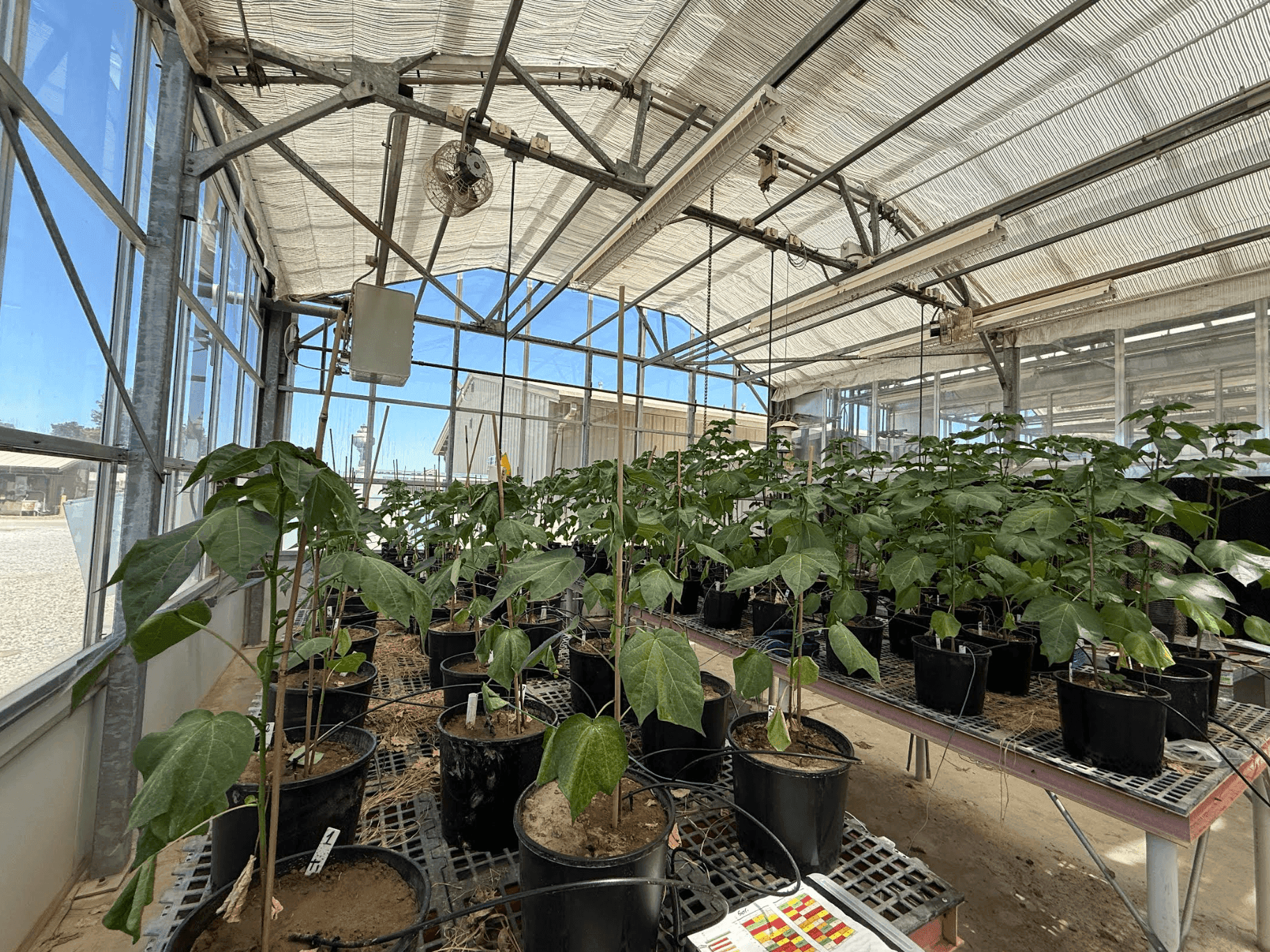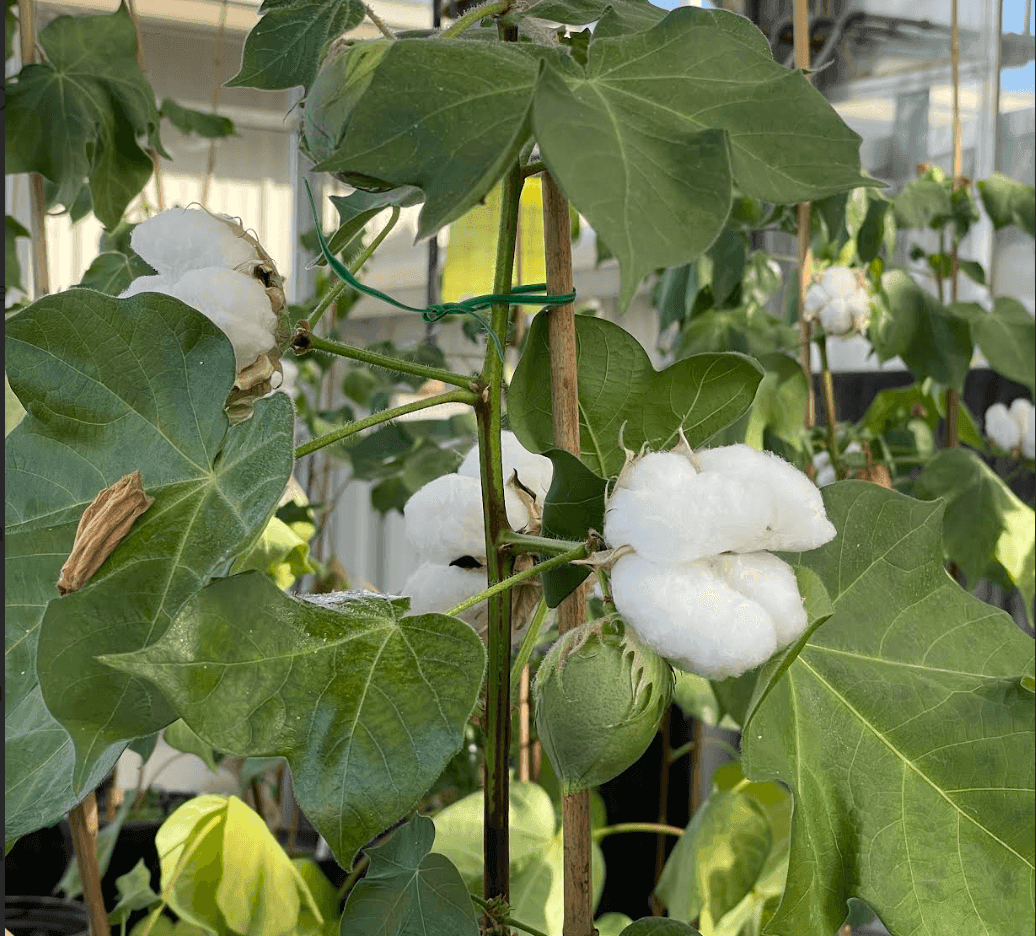Key Points
- Yield up, fertiliser down: trials show +10.3% yield with −22% fertiliser (Mississippi State) and +6.5% with −30% (UC Davis), alongside fibre gains in length, strength, clarity.
- Traceability stack: blockchain for identity-preserved lots; AI satellite monitoring for soil health, water retention and carbon—building a path to credits.
- Supply chain fix: pilots tackle segregation across gins–spinners via co-ops and digital tagging; 2025 trials cover 350 acres/10 US farms with Regenagri/Staplcotn, ROC (Texas) and SUPIMA (AZ/TX).
- Farmer adoption: microbial consortia slot into existing routines; subsidised first trials de-risk uptake and improve ROI.
Full interview with Biothread
1. What makes your regenerative cotton particularly amenable to blockchain traceability and satellite integration?
Biothread supports growers with microbial inputs that reduce fertiliser requirements while increasing yields, improving profitability, and helping them align with leading certification standards. To fully capture and validate this impact, it is essential that Biothread-grown certified cotton can be traced back to the farm with complete transparency.
Blockchain provides a secure way to preserve identity and assure brands that the fibre they receive is authentic, traceable, and compliant with sustainability claims. At the same time, AI-enabled satellite monitoring offers a scalable method to track key indicators such as soil health, water retention, and carbon sequestration across large acreages. This not only validates environmental performance but also creates a feedback loop for continuous improvement and opens opportunities such as carbon or biodiversity credits.
While not yet fully deployed, we are preparing to integrate these technologies into our trial programmes to ensure regenerative cotton is both traceable and environmentally substantiated.
2. How do your microbial soil inputs enhance fibre quality and prepare growers for certification?
Our microbial consortia work by enhancing nutrient efficiency and reintroducing key microbes into soils that have been degraded by years of intensive input use. This improves the plant’s ability to access essential nutrients throughout its growth cycle, which directly supports improved fibre development.
Certification partners have been particularly encouraged by our trial results showing measurable improvements in cotton fibre length, strength, and clarity, all critical factors for securing premium prices.
By restoring soil function, our products reduce the need for synthetic fertilisers, which are both costly and environmentally damaging. For example, at Mississippi State University our field trial demonstrated a 10.3% yield increase with a 22% fertiliser reduction, delivering a significant ROI for growers. Similarly, UC Davis greenhouse trials achieved a 6.5% yield increase with a 30% reduction in fertiliser, alongside fibre quality improvements.
Reducing fertiliser reliance not only improves grower profitability but also lowers barriers to regenerative transition. Certification schemes such as Regenagri place strong emphasis on soil health, input reduction, and environmental impact. Our microbial inputs directly support these criteria, positioning growers to more easily achieve and maintain certification. In this way, Biothread provides both a technical pathway to superior fibre quality and a practical tool for certification alignment.

3. How does combining satellite data with farm-level analytics help in regenerative decisions?
Satellite monitoring combined with farm-level analytics provides a scalable way to track regenerative progress, ensuring transparency and informed decision-making across large acreages. Key indicators such as soil health, water retention, and carbon sequestration can be measured consistently, creating feedback loops that help farmers refine practices while giving brands and certification bodies reliable data for ESG reporting and claim validation.
For farmers, this integration not only improves management decisions but also opens pathways to additional income streams, such as carbon or biodiversity credits. While we have not yet implemented these systems, Biothread is actively working to integrate them into our current trial programmes, laying the groundwork for data-driven monitoring that strengthens both grower profitability and supply chain integrity.
4. What was the biggest hurdle in deploying identity-preserved cotton, and how did you solve it?
The greatest technical hurdle is the fragmented, multi-stage nature of cotton supply chains. Cotton typically passes through ginning, trading, spinning, and manufacturing before reaching brands, making it extremely difficult to preserve smaller, identity-preserved batches without loss of traceability. As we scale, the challenge is compounded by the need to separate regenerative cotton from conventional volumes while still fitting into existing infrastructure.
A second challenge lies in the absence of standardised traceability systems across stakeholders. Each stage of the supply chain often relies on different record-keeping practices, making it difficult to maintain consistent verification from farm to finished fabric.
To address this, Biothread has prioritised working with trusted cooperatives and certification partners who can support segregation at critical points. We are also developing the integration of blockchain and digital tagging systems to ensure that identity is preserved throughout each transaction. By piloting these approaches within our 2025 trials, we aim to demonstrate practical pathways to move regenerative cotton through supply chains.
5. How do you quantify carbon sequestration to enable credit generation?
While we have not yet fully implemented this, Biothread is working towards a system that combines AI-enabled satellite monitoring with on-farm data collection to quantify carbon outcomes. This will focus on measuring soil organic carbon and biomass accumulation as key indicators of sequestration. In parallel, we will calculate avoided emissions from fertiliser reductions, since fertiliser production and use are highly carbon-intensive.
Together, these datasets will provide the material evidence required to validate regenerative outcomes and create a pathway for growers to access carbon-credit markets.

6. How does certification alignment intersect with material performance?
Certification provides the essential baseline of credibility, ensuring that regenerative practices are independently verified and trusted by brands and consumers. However, certification alone does not always guarantee the material performance that premium brands demand.
Trials have demonstrated that our microbial-based inputs not only help growers meet certification criteria such as input reduction and soil health improvements, but also enhance fibre qualities including length, strength, and clarity. These qualities are critical for achieving premium prices and for positioning regenerative cotton as a true performance fibre, not just a sustainable alternative.
The combination of certification alignment with measurable material gains enables brands to access cotton that is both high-performing and credibly regenerative. This dual benefit supports premium branding strategies by offering ESG validation alongside superior product quality.
7. What affects scalability when shifting from trials to commercial deployment?
Scaling from university-led and pilot trials to commercial deployment requires proving that regenerative solutions can work reliably across diverse geographies, farming systems, and fibre types.
Our early successes at Mississippi State University (10.3% yield increase with 22% fertiliser reduction) and UC Davis (6.5% yield increase with 30% fertiliser reduction) have provided strong scientific validation. Building on this, in 2025 we are extending our work to 350 acres across 10 US cotton farmers, in partnership with leading certification bodies and cooperatives.
These trials include:
1/ 150 acres across six Regenagri farms with Staplcotn, embedding regenerative practices within one of the largest cotton cooperatives in the US.
2/ ROC partnership trials in Texas, testing our products in organic-certified systems.
3/ SUPIMA trials in Arizona and Texas, applying our approach to premium Pima cotton.
Feedback so far has shown our microbial products integrate seamlessly into existing farm management, reducing barriers to adoption. To further support scalability, we plan to subsidise initial farmer trials, allowing growers to see the economic and agronomic benefits first-hand. This de-risks adoption for farmers, who often bear the full financial burden of production.
Beyond harvest, we also aim to expand deployment of our Regenerator product, which accelerates residue breakdown and nutrient recycling, further enhancing soil health. Case studies and evidence from these large-scale, certification-aligned trials will not only validate our approach but also create a pathway for widespread adoption through cooperative networks and certification schemes.

8. What upcoming tech or material innovation could further circularity?
Alongside biological innovations like our microbial consortia soil inputs, AI-driven monitoring and crop modelling platforms such as those developed by CIBO Technologies stand out as a major enabler of circularity and sustainability.
By combining remote sensing, high-resolution crop mapping, and modelling, these systems can quantify regenerative outcomes such as carbon sequestration, water retention, and fertiliser reduction at scale, while also reducing the reporting burden on farmers.
For Biothread, integrating such tools into our future platform would allow us to validate certification criteria, support carbon-credit generation, and strengthen ESG reporting for brands, while also providing farmers with data-driven insights to optimise regenerative practices.








